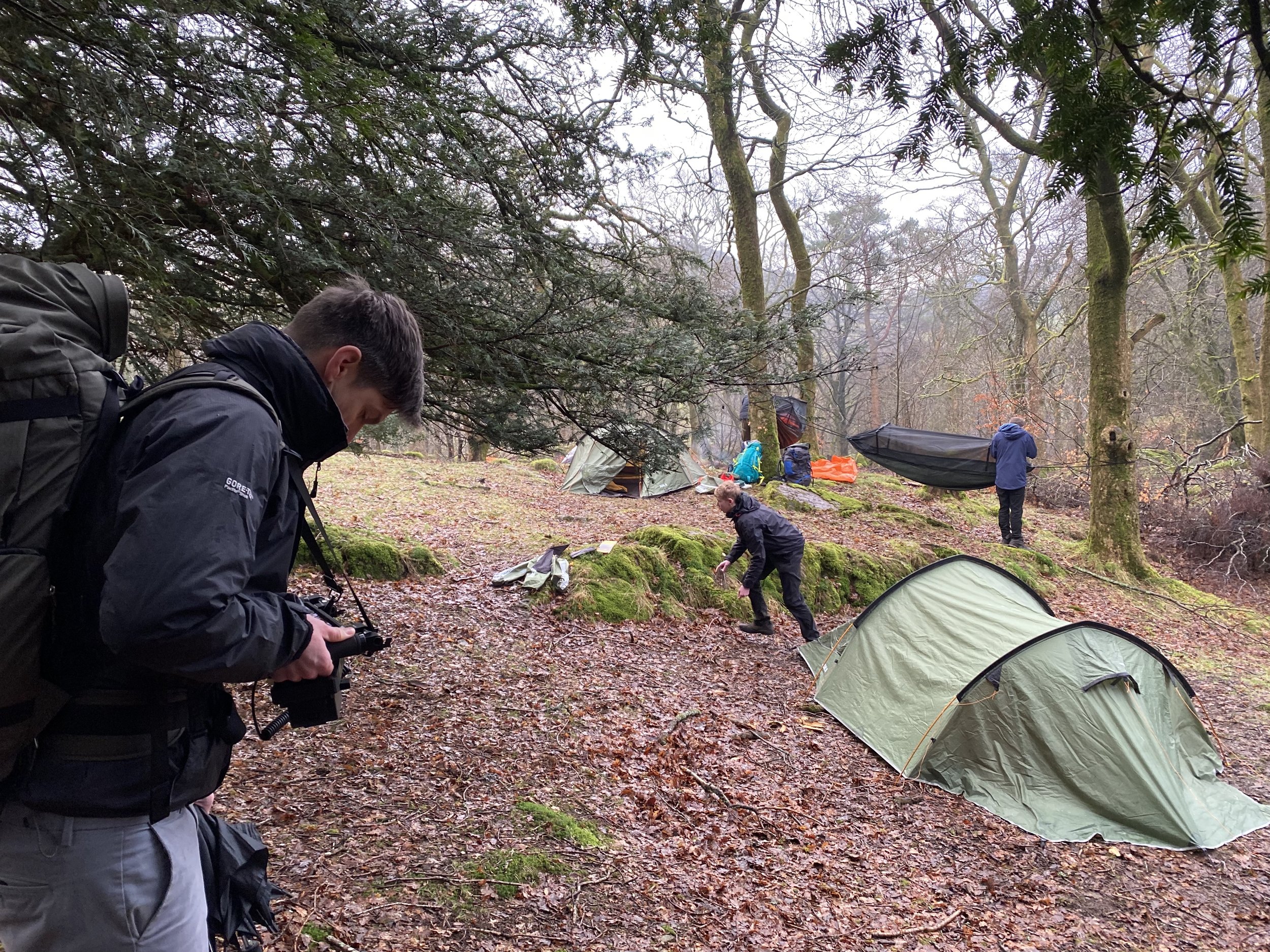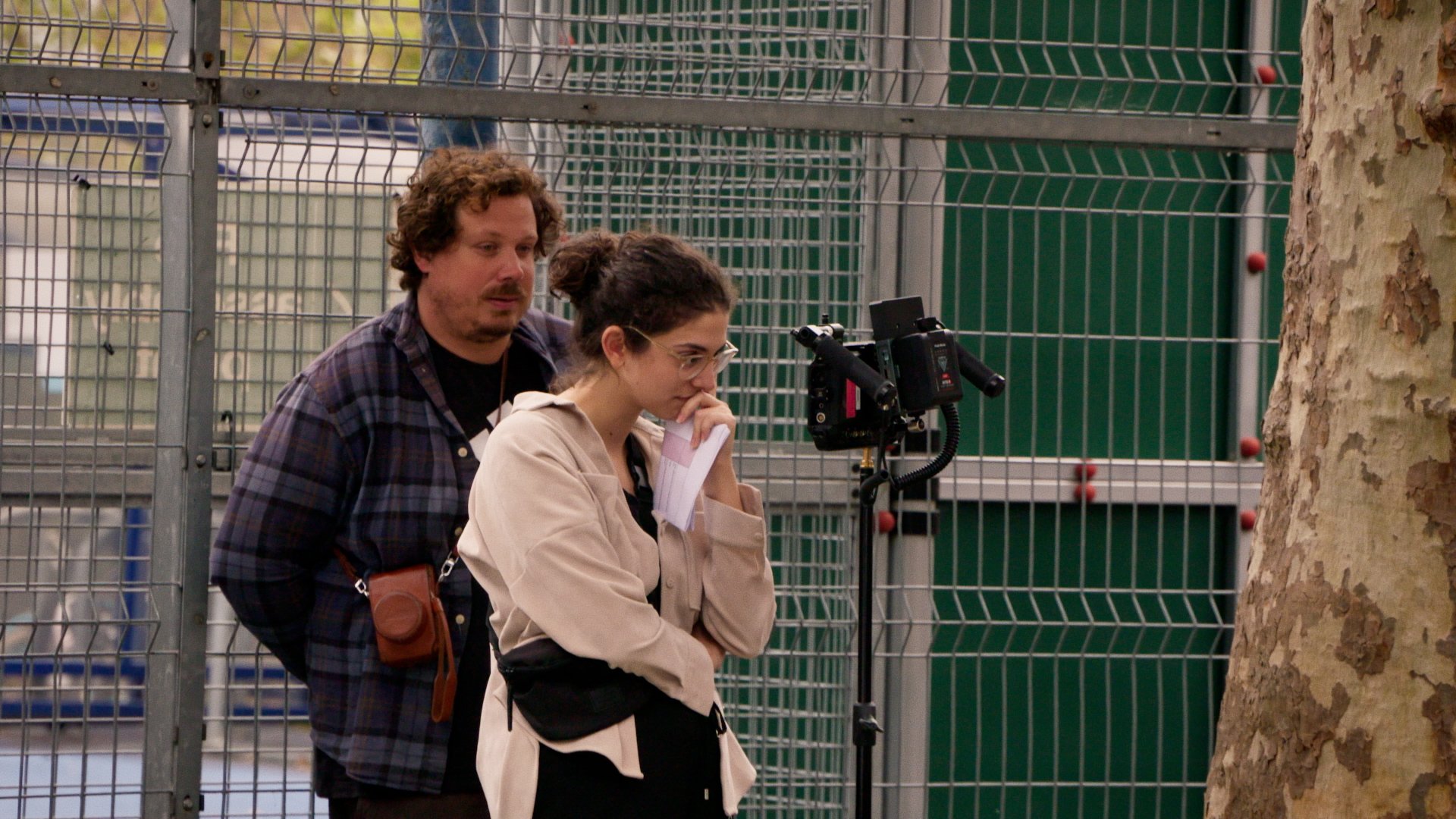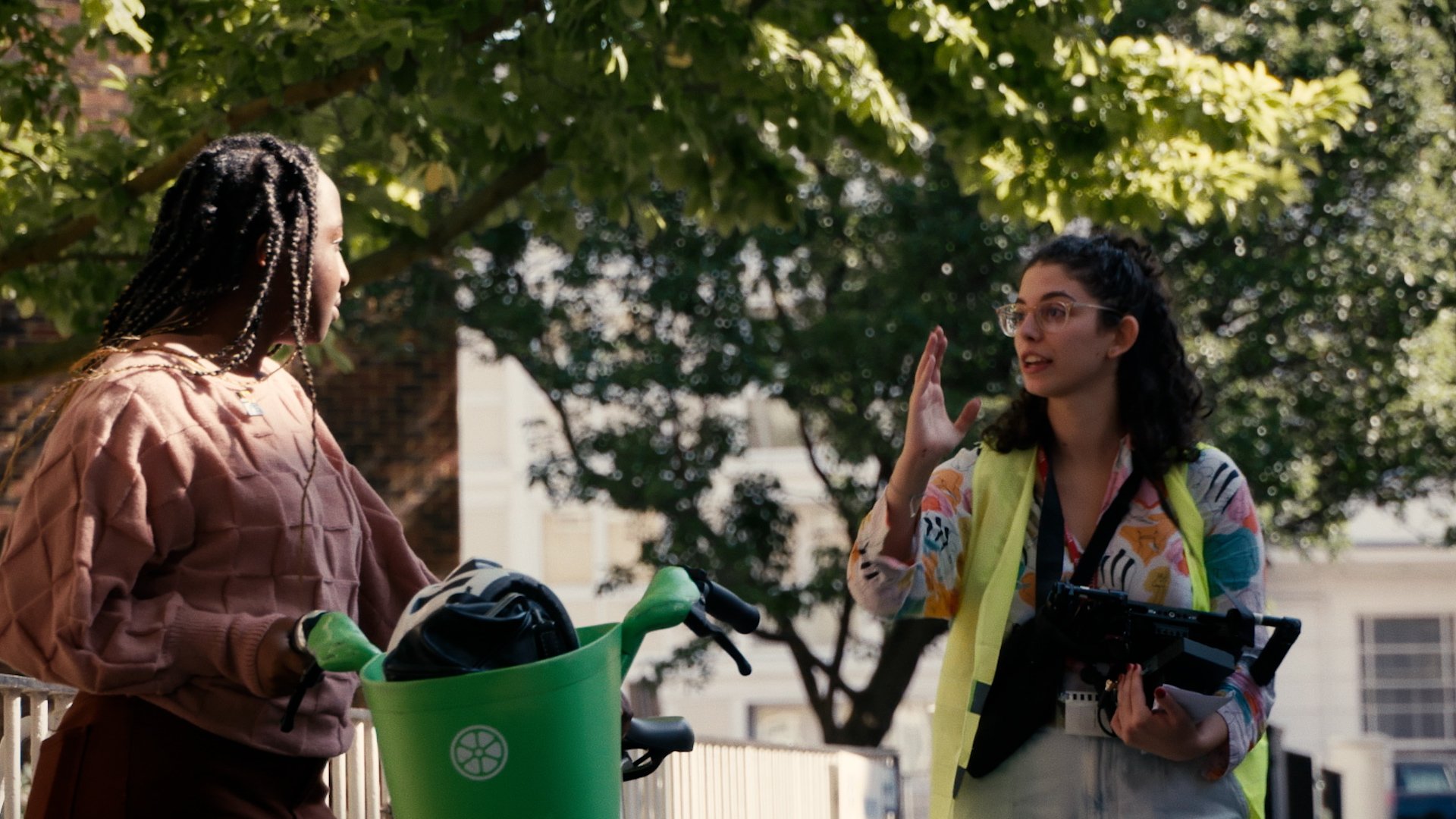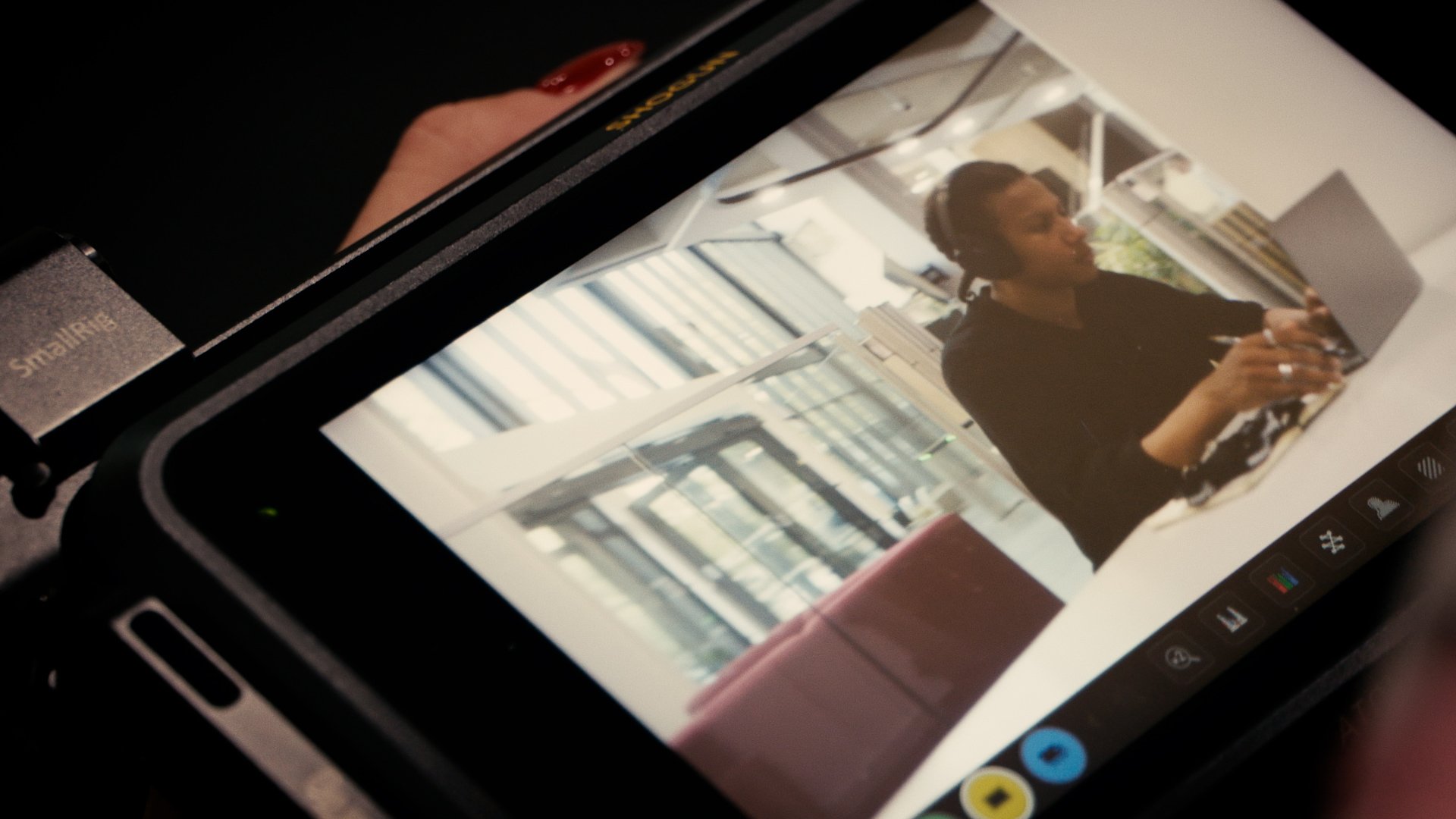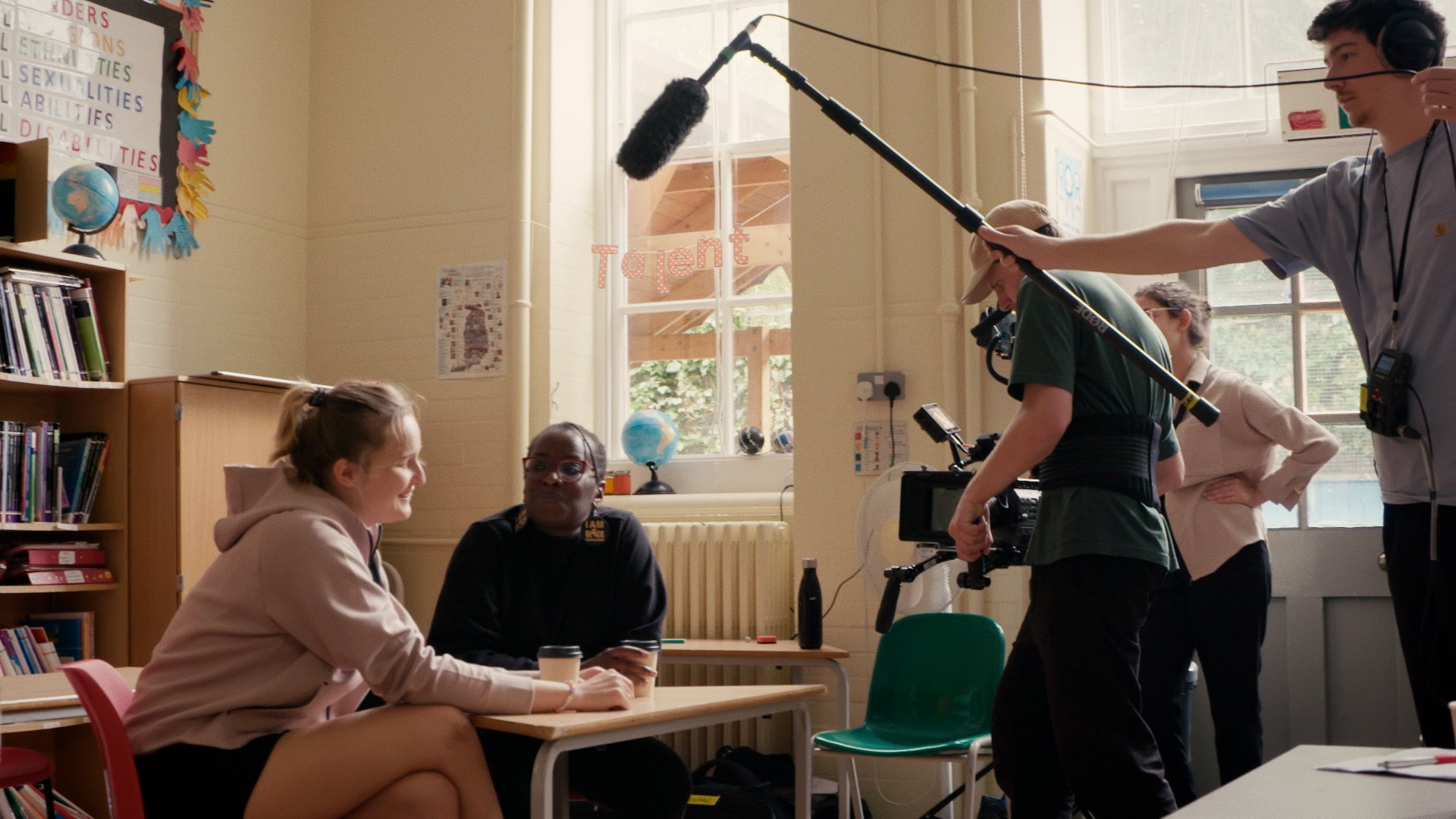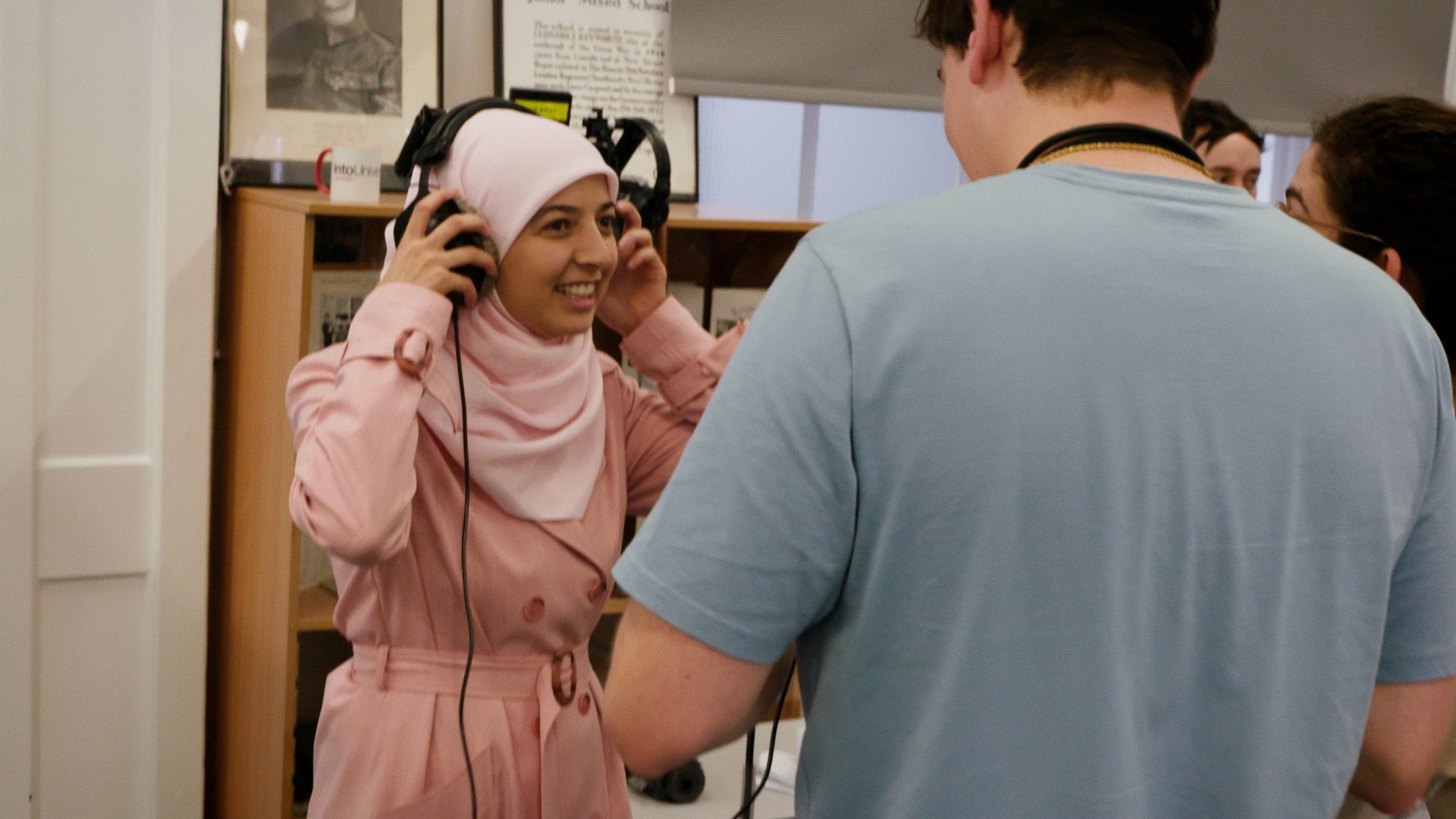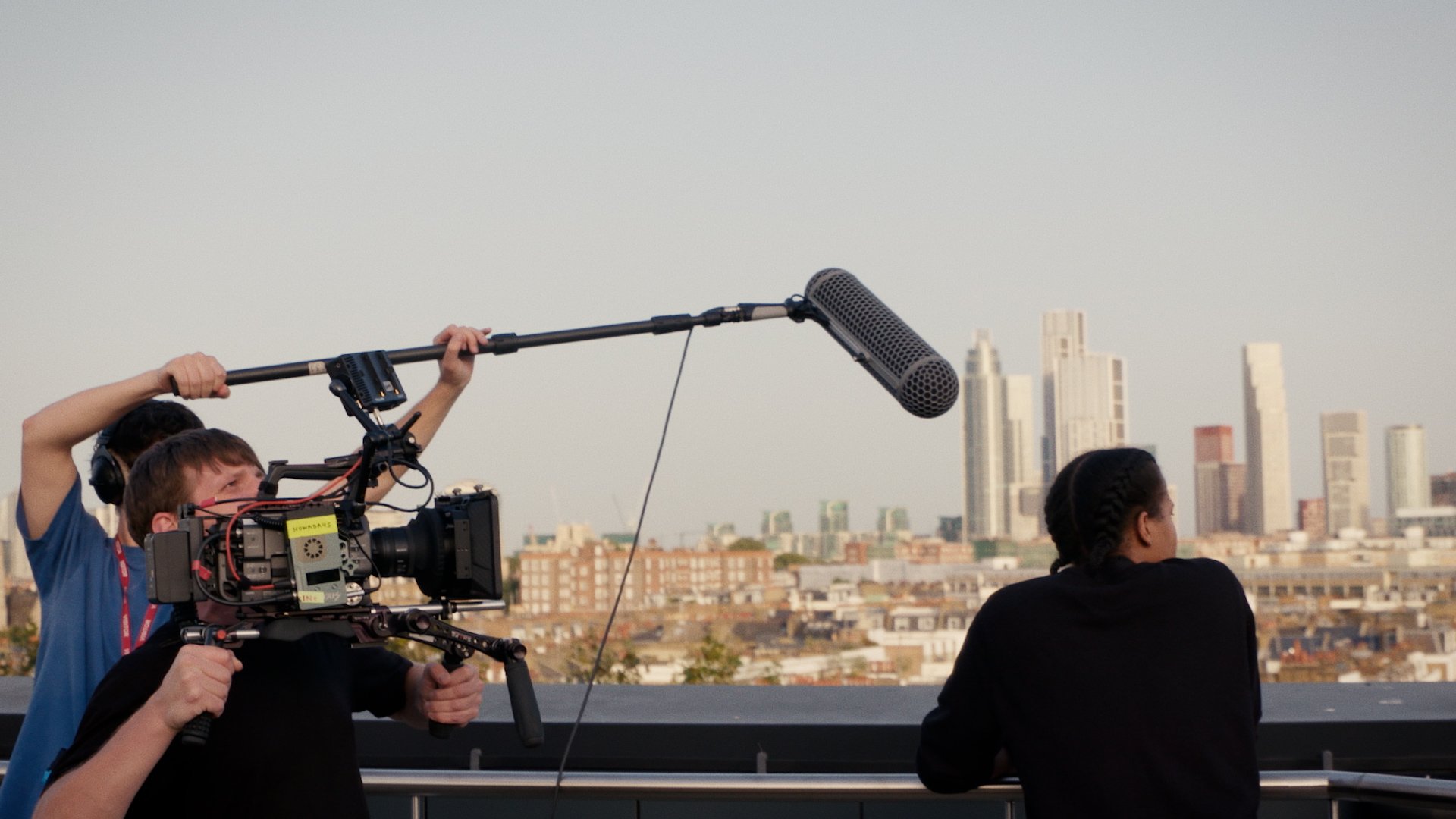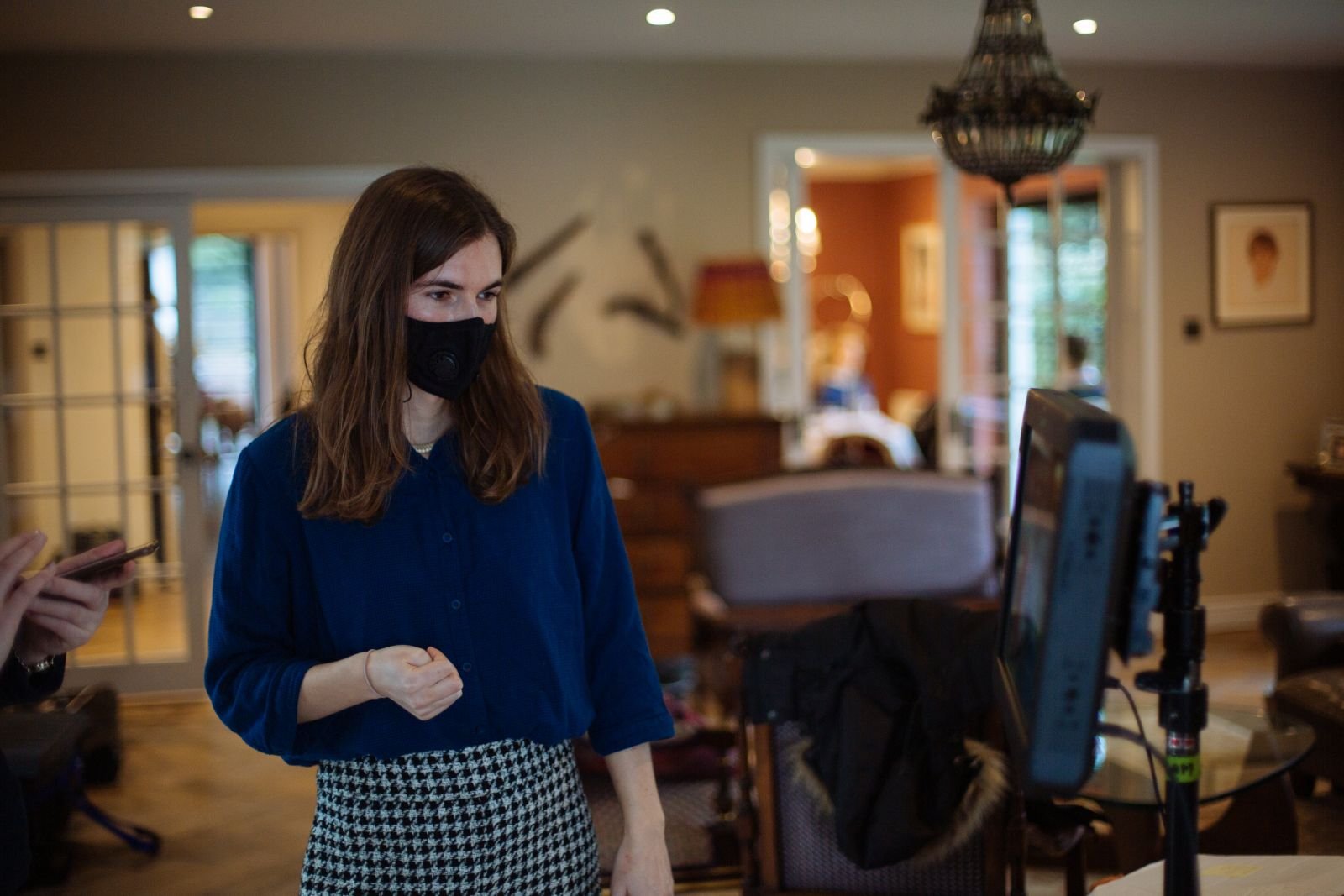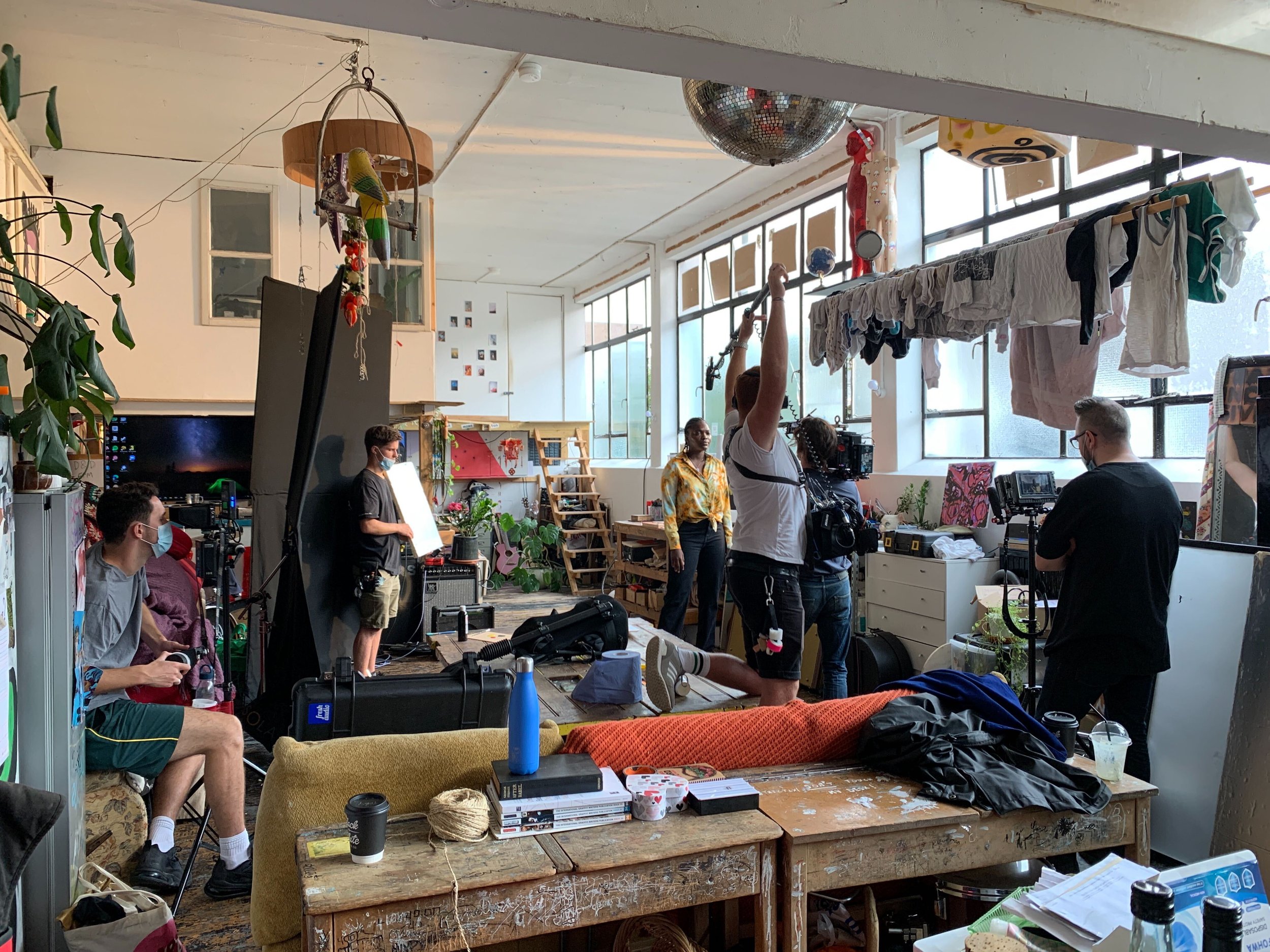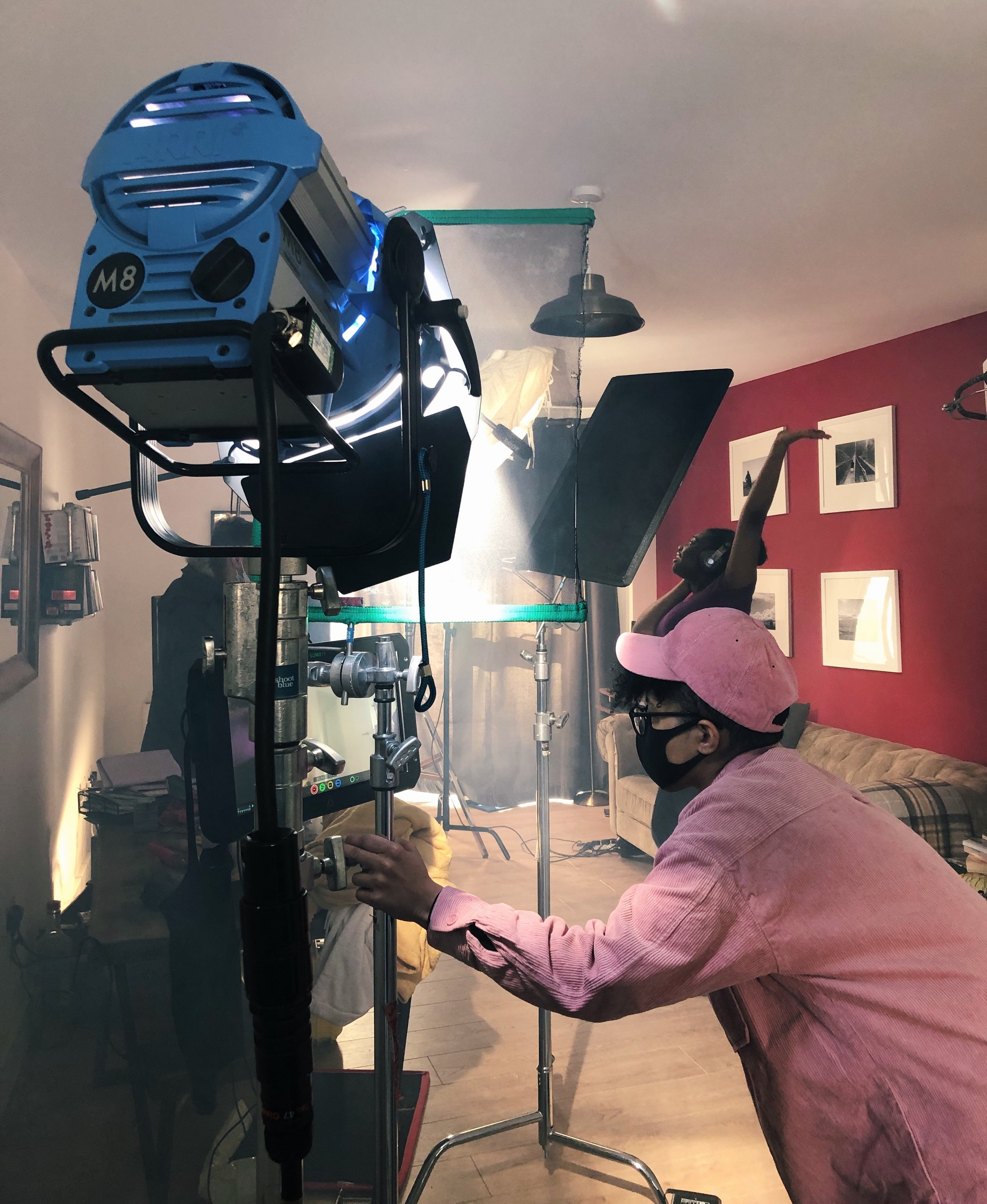The Importance of Having Pre-Calls
Hi, Mike here, in-house director at Nowadays.
Since the dawn of time (well, 2012), the team at Nowadays have been making films for Scouts – from big impressive (not to mention award-winning) brand positioning pieces, to lovely little animations – so when I was entrusted with leading this years campaign, the first question I asked myself was:
What can I bring to the table?
Over the years, for me to connect with the work and do a great job, I need two things. First and foremost, a clear goal. Scouts are a charity, they continually need volunteers to be able to provide opportunities for children across the UK and right now they are in urgent need of adults for their ‘Explorer’ groups (the 14-18 years old).
Awesome! Clear goal in sight! Next…
To find a way into a project I also look for a hook, a way for me to connect with or understand the story on a personal level. I'm not a Scout, I've never been to Scouts, and to be honest, I’m really time-poor. So for me, I wanted to understand what would compel someone to give up their precious free time to get out there and volunteer. However, discovering this answer while making the film is not an option: in order to control my shoot I need to get to know my contributers…
For those not in the know, a pre-call is an informal chat with your contributor ahead of the shoot, and truth be told, I used to despise these. When I first started out I had an (ill-informed) romantic image of the doc-director dropped from a helicopter straight into a shoot, with nothing but their guile, their wits, and a trusty DoP to succeed.
With experience, I’ve come to understand that, in fact, the pre-call is essential to the success of my projects. It’s a great way to ease someone into the process of filming; where you can be transparent about crew, equipment, and your demands on their time; and encourage your contributors to ask any questions that help demystify things for them.
Most importantly, with just a few searching questions, the pre-call is where you begin to shape your narrative…
When I’m in pre-production, and especially in pre-calls, I like to channel my inner Theodore Donald Kerabatsos (Donny from the Big Lebowski) - “like a child who wanders into the middle of a movie and wants to know... [what’s going on].”
I’ve found this wide-eyed approach extremely helpful when talking to contributors for the first time. Asking the obvious questions and taking people back to the beginning of their journeys is a great way to understand what they can give me during a shoot; are they energetic, excitable, open, reflective? Before you know it, the person you’ve only just met is confiding that, “all through my childhood I struggled with my confidence… Scouts gave me an identity and a place.”
This is the kind of testimony that you can build a film around.
When another contributor later explains that being a Scout leader, “is a privileged position; you’re trying to help kids who might be really struggling in lots of ways, and actually, you can really help.” An idea begins to form that Scouts is a safe space, and maybe this series of films can celebrate that.
The more you can dig away and break down what someone does, the more you begin to understand the visual possibilities of the shoot, the scenes you might want to see. Here are a few examples of the insight as inspiration for the shots…
Anes’ Story: the Neckerchief Game
“Whenever I feel like I'm too busy, all it takes is one smile from an Explorer to make it worth all the sweat”.
When Anes shared this with me, I knew we needed a scene that would encapsulate the bond within his group as naturally as possible; but most importantly, a moment of genuine connection that never fails to make him smile.
Victoria’s Story: the Bonfire
“I'm always surprised how they embrace each other's weirdnesses. They're not afraid to be themselves, and they love being together.”
Going back to this idea of safe spaces, the lighting of the bonfire became this moment of total liberation, where we could capture Victoria’s Explorers without inhibition. Once in the edit, we knew that letting these visuals speak for themselves would be more powerful and emotive than anything she could say.
Zahir’s Story
“Historically, Scouts was perceived as being a very white, Christian organisation. There weren't many people of colour.”
Hopefully this one speaks for itself. Profiling the groundbreaking work of the Muslim Scout Fellowship during their annual ‘Iftar Under the Stars’ event allowed us to send a powerful message that Scouting is for everyone, regardless of race, gender, or class.
If you haven’t already you can watch all three films here
What Momentum Taught Me About Filmmaking
Hello again - it’s Sandy, director at Nowadays. You might have noticed we’ve dropped our third film for Impetus, and this time it’s really packing a punch as we celebrate the last 21 years of impact they’ve had on millions of young people’s lives.
The theme of this film is ‘momentum’ - the idea that things keep moving forward, whether its young people’s futures, or Impetus’ future endeavours. But what I didn’t realise was how much momentum came into the process of making the film as well. Here’s a few things that working with ‘momentum’ taught me, and how it helped me understand the filmmaking process all over again.
Rolling with the punches
Making this film taught me to be more spontaneous and loose with my directing style. As someone who so dearly wishes to control every aspect of a situation (my mantra is “fail to prepare, prepare to fail”), I have to say, sometimes it’s not possible. For example, we had planned a gym/training montage scene that was meant to be high energy and fast paced. Except when we got to the location, there wasn’t a gym, just a very empty sports hall.
So what do we do? What we all attempted to do at least once during the pandemic - a very manic HIIT workout. Of course doing a workout alone and in front of the camera isn’t the most comfortable thing to do, so I roped myself and production assistant Jacob into getting a workout ourselves.
The result? Movement and momentum that still got across the energy we wanted this film to have + a couple of sweaty crew members.
(By the way, if you need proof I was involved in that workout - you can see for yourself in our BTS film we made alongside 21 Years of Impact below)
Good momentum, bad momentum
Ok, so momentum is what keeps things moving, we know that. But I need to point out that this can be good or bad. Instead of feeling like you’re riding a wave of productivity, there is also another side of momentum; the kind that can frazzle you, uses up all your energy, the kind that makes you forget to eat, and narrows your focus so much that there’s less room to explore and try new things - I call it ‘bad momentum’.
This is where it’s helpful to have someone on set that can look out for when this is happening. If it weren’t for my producer, Charlie, scolding me on day 1 of the shoot, telling me to drink water and grab a bite to eat, I’m sure I’d have forgotten completely. It was a good reminder that it's okay to chill out a bit. Reset. Take a second to step back, and take a look at the whole picture before jumping back in.
Everyone on board
The momentum train is pulling out of the station, but wait a second, your whole cast and crew are left on the platform - this can be a recipe for disaster.
Making sure that everyone else is along for the ride with you is incredibly important. For this film, the dialogue moved through six different characters, so it was vital that they understood the wider context and what role they were playing in it.
The same principle can be applied to the crew as well. Even something as small as checking in with each other throughout the shoot is very beneficial. Whether that’s about script, schedule, breaks, or general mood. Not only does this actually instil me with more confidence, but it sets a more harmonious pace for the process in general, that way no one’s left behind or out of the loop.
Full disclosure, Impetus was my first charity campaign film for Nowadays, and the first time I had the chance to work on something that pushed me out of my comfort zone as a director. I wouldn’t be writing this post if I didn’t think I had something to say about the process, and what it really taught me. Our end line for the film was, “I’m just getting started” - written to reflect the fact that both Impetus and our cast of young people have so much more to come in the future. As always, there’s some truth in the art - I’m also ‘just getting started’.
How I Learned to Stop Worrying and Love the Constraints of Covid
What’s this? Yet another article about the trials and tribulations of working during this seemingly interminable pandemic?
Not exactly.
I’m Phoebe, I’ve been a director at 3angrymen for coming up on nine months now, and I’ve already had the pleasure of directing work for the Scouts, the NSPCC, P&O Ferries, and Girlguiding. It’s been a wild ride, and we’ve done all of it while dealing with what’s hopefully (!) now the tail end of Covid.
But rather than delving into the tediously well-documented downsides of the pandemic, I want to talk about the ways it’s changed how I direct films for the better.
1. Why do I do it like this?
I never went to film school or had any formal training, so my processes have evolved over the years through a combination of learning on the job and watching YouTube videos called ‘5 Top Tips for Low Budget Filmmakers’. In the past I’ve justified the way I run my set purely on the basis of “that’s just how I’ve always done things”, or “that’s how they said to do it in ‘5 Top Tips for Low Budget Filmmakers’”.
Then Covid came along. Most of the restrictions are self-evidently not an improvement, but they still made me confront why I do things a certain way.
As an example, I used to be fairly laissez-faire about letting crew members move around on set, and I’d rarely mind if a dozen crew members were all packed into a tiny room, even if the actor was meant to be having an intimate emotional breakdown in said tiny room.
Covid forced me to be much more strict about who was allowed on set, cutting it down to who was truly essential. It made me realise that often this is a much better way to work, and that it’s far more efficient to have a good radio system or trusted producer calling crew to set when they’re needed.
2. Nothing will stop my production unless I let it
In pre-Covid times, I used to take any last minute disasters hard. If anything went wrong unexpectedly, I’d be totally blindsided and would feel like I might as well give up and become an accountant. Inevitably things would work out, but somehow my brain was programmed to expect things to go well, and so any problems felt like being on the Titanic post-iceberg.
The Covid era introduced me to a level of stress that I never before knew existed. I’ve had to deal with my production manager, production assistant, camera operator and 1st AC having to drop out to self-isolate two days before a shoot, and then a replacement production manager dropping out at 11:00pm the night before the 9am call time.
The sheer deluge of disasters finally made me realise that there isn’t a single problem that can’t be solved - or at least, cannily navigated around - by sitting down with my producer and marshalling some intense creativity.
The fires of Covid have left me permanently a more Zen-like director, and I find that even non-Covid-related issues don’t bother me as much any more.
3. Taking safety seriously
Before Covid, the only time I’ve been faced with an obviously dangerous situation on set was when I was a teenager, running around the fields making films with my friends, and one night we had a terrifying run-in with a shotgun wielding farmer. In my professional career, I have to admit I’ve mostly seen risk assessments as merely a piece of paperwork to be ticked off by my producer.
Covid changed all that. The possibility that any set could turn into a superspreader event is something I have to be constantly mindful of. My shoot could be responsible for not just getting my cast and crew ill, but also starting chains of infection that end up reaching more vulnerable people.
This stark reality has made me a more responsible filmmaker. I’m now more aware that a film set is always a potentially dangerous operation. Combine hot lights, heavy machinery, and lots of people trying to move around each other at speed, and there’s a far higher baseline level of risk than with a regular office job.
Going forward, I think I’ll be a lot less likely to grumble when things are moving slowly because people are taking the time to set up equipment properly.
4. I won’t take connection for granted
Facemasks are absolutely horrible to wear all day. They also make it harder to communicate with people, because you can’t read facial expressions. This is bad, if your job is to build rapport with people in stressful situations, or to subtly adjust an actor’s performance.
But mask wearing also exposed a weakness in my directing that I’d never faced up to. I’m someone who likes to avoid having difficult conversations, and I can get shy when meeting lots of new people. Covid made me realise that because of this I’d not been paying as much attention as I should have to making sure my cast and crew were happy and understood what we were trying to achieve. I used to rely on a perfunctory nod, and I often wouldn’t take the time to properly check in with people.
Going forward, even once masks aren’t required, I intend to be more deliberate about checking in with my cast and crew throughout each shoot day. Communicating with my collaborators is like 90% of my job, and I should spend much more energy making sure I’m doing it well.
5. Why am I doing this?
As the director, I have a lot of responsibility. Not just as a leader on set, but more fundamentally as the shepherd of the film’s creative vision.
I’m veering dangerously close to totally disappearing up my own behind here, but the purpose behind all this - all the processes, practicalities, hard working collaborators, and scarily large sums of money - is to turn an ephemeral idea into reality.
Over the last two years, I’ve found myself pushing a lot harder to not just settle for creatives that are ‘fine’. To constantly ratchet up my standards for what a film can be. Can I take constraints and weave them into a strength? Can I find a way of doing something that’s never been done before?
But it’s more than just pushing myself in terms of quality. Across months of home working, the ebb and flow of restrictions and changes to how we live and relate to one another, I’ve also found myself thinking far more about the value of what I’m working on. How are the projects I work on creating value for the companies who commission them, and how are those companies adding value to the world?
Before the pandemic, I didn’t care too much about the type of projects I directed - I just wanted to make cool work, maybe with a nice camera and some snazzy camera moves.
Last week, I directed a film for the NSPCC, with the goal of making it easier for parents to talk to their children about bodily autonomy. It was a simple setup - just one camera filming an actor* talking.
But I finished that day feeling far happier with myself - my work and what I was bringing to it - than I’ve ever felt on a big budget set with all the flashy gizmos.
That’s something they didn’t mention in ‘5 Top Tips for Low Budget Filmmakers’.
So no, I’m not going to miss Covid restrictions in the slightest, and I can’t wait to throw my mask in the bin. But I’ll always be weirdly grateful for these strange times, because I think Covid has made me into a stronger and more purposeful director.
*Admittedly this actor was Natalie Dormer, which does always help.
Director Notes / Borrn Stories
‘Shorter is better’ is a term used so often in advertising parlance that it’s practically rule number one in the textbook.
‘Shorter is better’ is a term used so often in advertising parlance that it’s practically rule number one in the textbook.
Not so when our team was asked to work with Borrn - an emerging company bringing beautifully designed baby products to the market. They wanted a series of films showing the growing relationship between parents and their newborn child, encapsulating their ethos that “the moment a child is born, a parent is born too.”
Everything I’d come to understand about directing one film with one message went out the window. Borrn was asking for content that would sit in the background of a product launch with minimal coverage of the products themselves - not a brief you come across everyday.
In development, the creative pairing of Thom Wood and Danny Baldwin didn’t want to rely on the unoriginal ‘cute babies sell products’ maxim. Instead parents would be the focus - seeing their experiences with a baby for the first time, an insight that led them to the theme that would tie all the films together - ‘Parent Firsts’.
Cliches that centered on a baby’s first words or first steps were ignored in place of small landmarks that parents know all too well - the first lie-in you weren’t expecting or the first time you have to leave your baby to go out.
This focus on the parents meant I had to look for a convincing pair to play Mum and Dad. The down to earth chemistry between Amy Alexander and James de’Val shone through from their first audition together, a perfect blend of Amy’s playful but assertive mother and James’ shy and thoughtful father.
I was keen to introduce their two characters in the first episode as separate people focused on the arrival of a baby, almost to the point of complete distraction. Then when they finally share the same frame in an intimate (and dramatic) moment, the impact feels stronger. I wanted all the focus to be on Amy’s character for this final shot, going through the whole range of emotions for both parents. It felt scary not shooting the reverse reaction of James de’Val but also liberating - finding a way to get both performances in just a single close up.
We had DOP Tim Fok to thank for reacting to the scene, keeping it ‘spontaneous’ and creating shortcuts to reduce our shot list. Tim recalls the process of filming longer single takes:
“Our approach was to prepare for multi-shot coverage, but start with the most critical angles and let the action play out. Then really question whether we needed the extra shots. Shooting in this way meant our shot to screen ratio was always pretty high, and enabled us to keep on track with the schedule.”
Another byproduct of being bolder with our shot choices was an added sense of realism, not feeling the need to cover every line in the edit.
Our impromptu work ethic continued when working with the babies, embracing what they were doing and adjusting our story accordingly. The ‘First Day Back’ scene was completely transformed by the baby crying on cue when Mum left for work. We hadn’t planned on it happening but it worked so well we couldn’t leave it out of the edit. Similarly Dad awkwardly picking up the baby and soothing him to be quiet again was another piece of magic that made the scene work.
Amy Alexander enjoyed performing without a plan:
“The improvised moments with the babies just made it all the more real as you have to work around them! Babies can feel tension so if you’re all tense trying to get that ‘perfect’ shot they feel it, and they will react, and that’s realistic, you’ve got to work with it.”
It served as a great reminder that as a director, you can picture the film as much as you like in your head but it always pays to be open to what happens on the day - even if you have to wait for it to emerge.
Thanks for reading!
-GS



